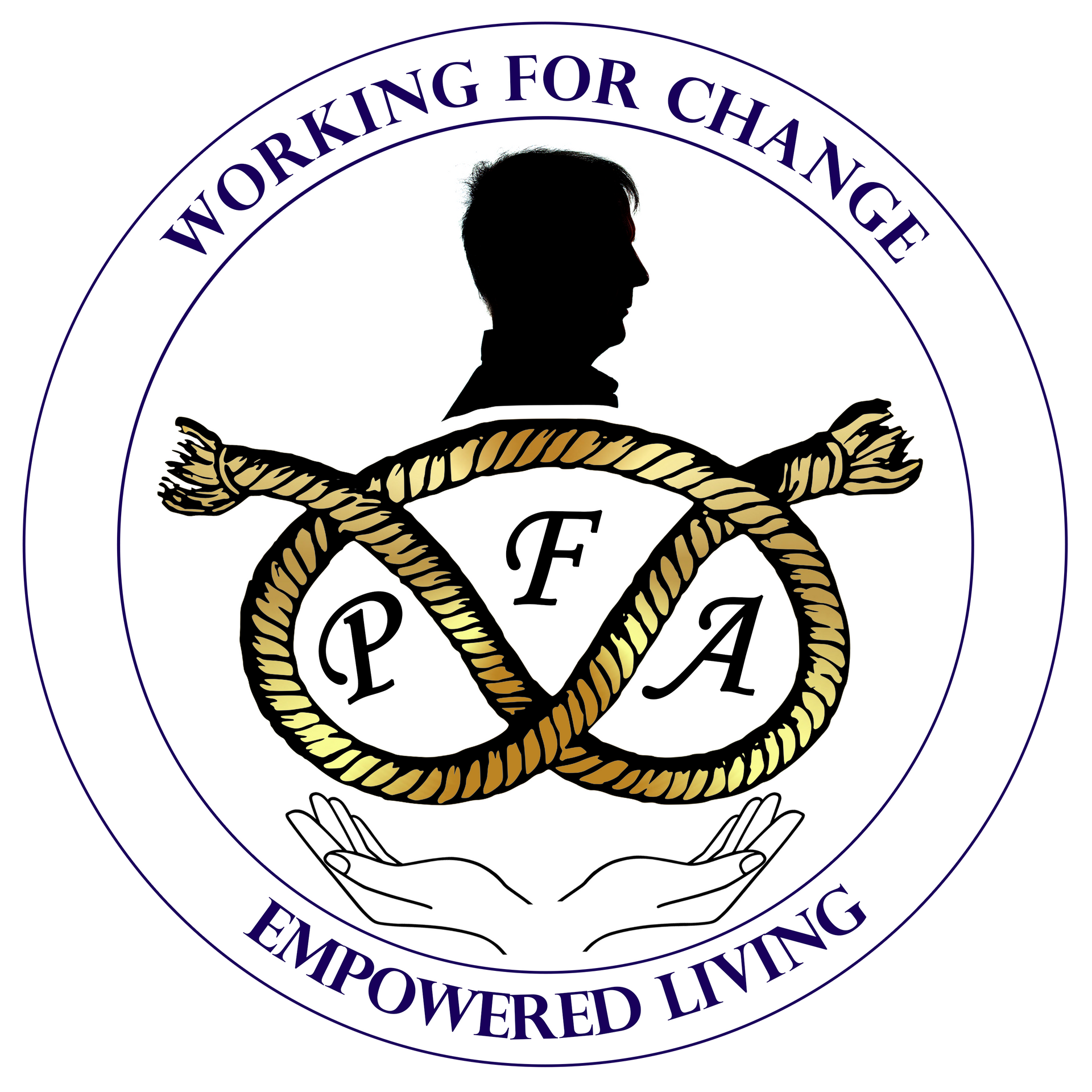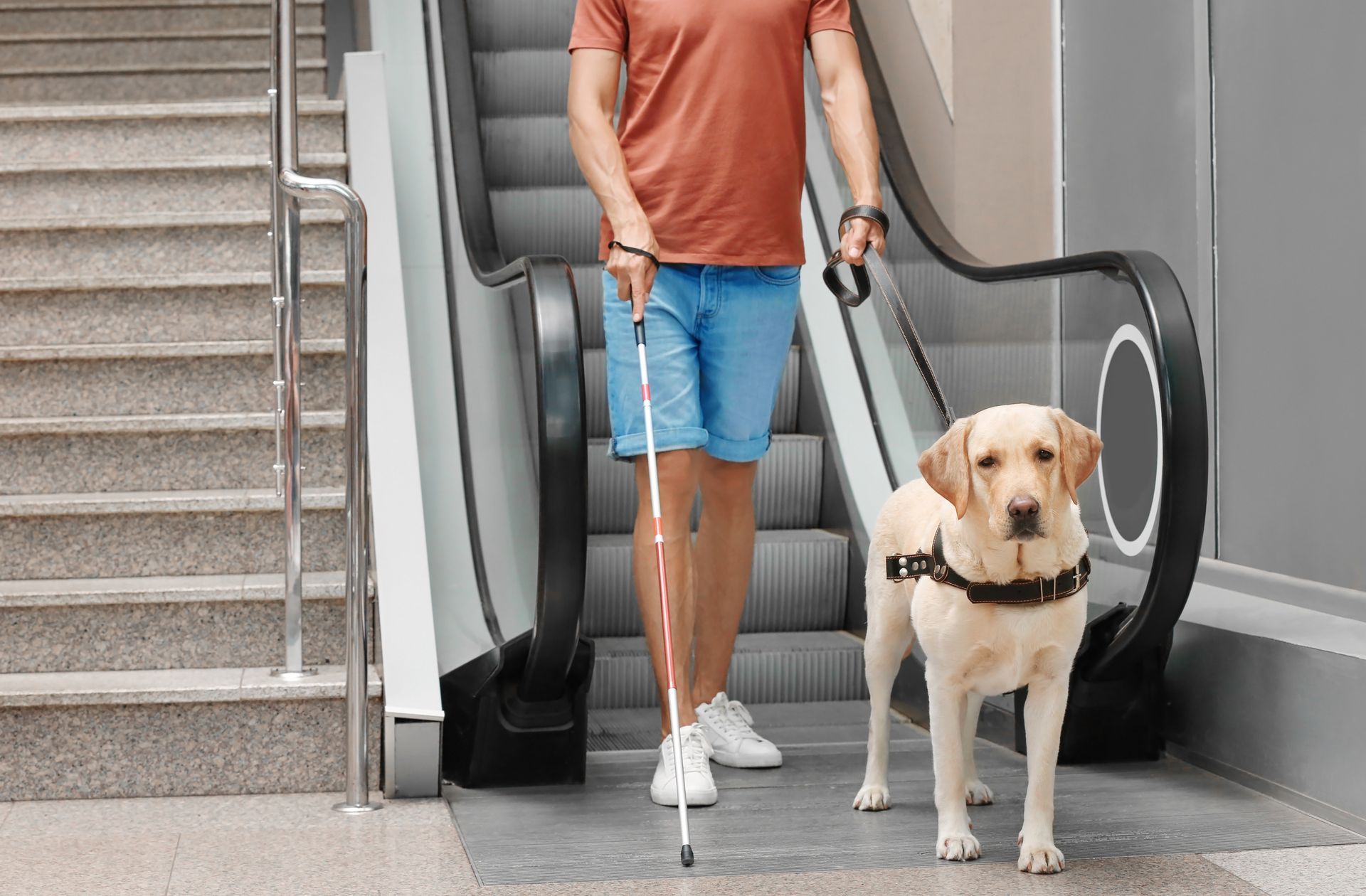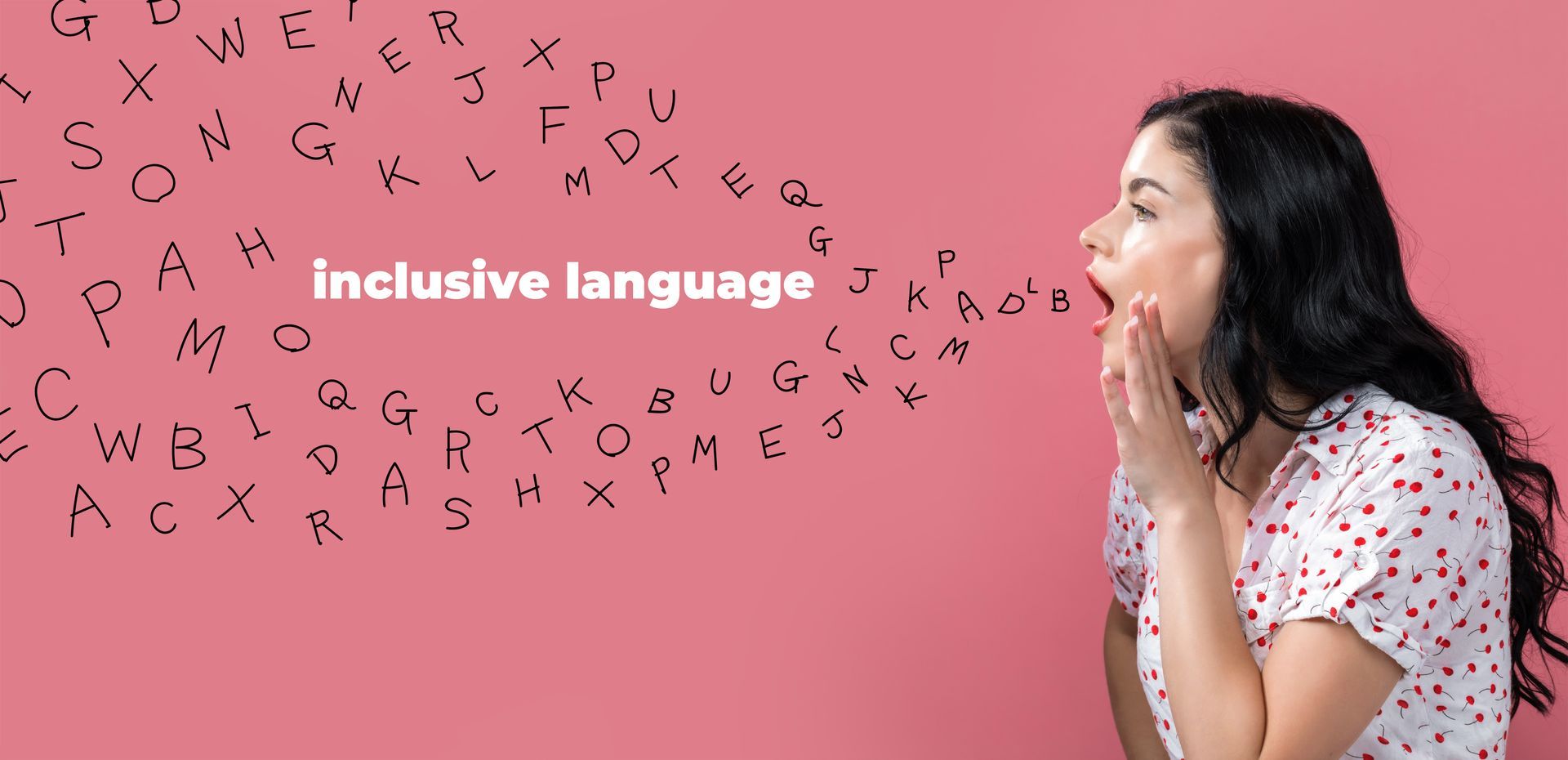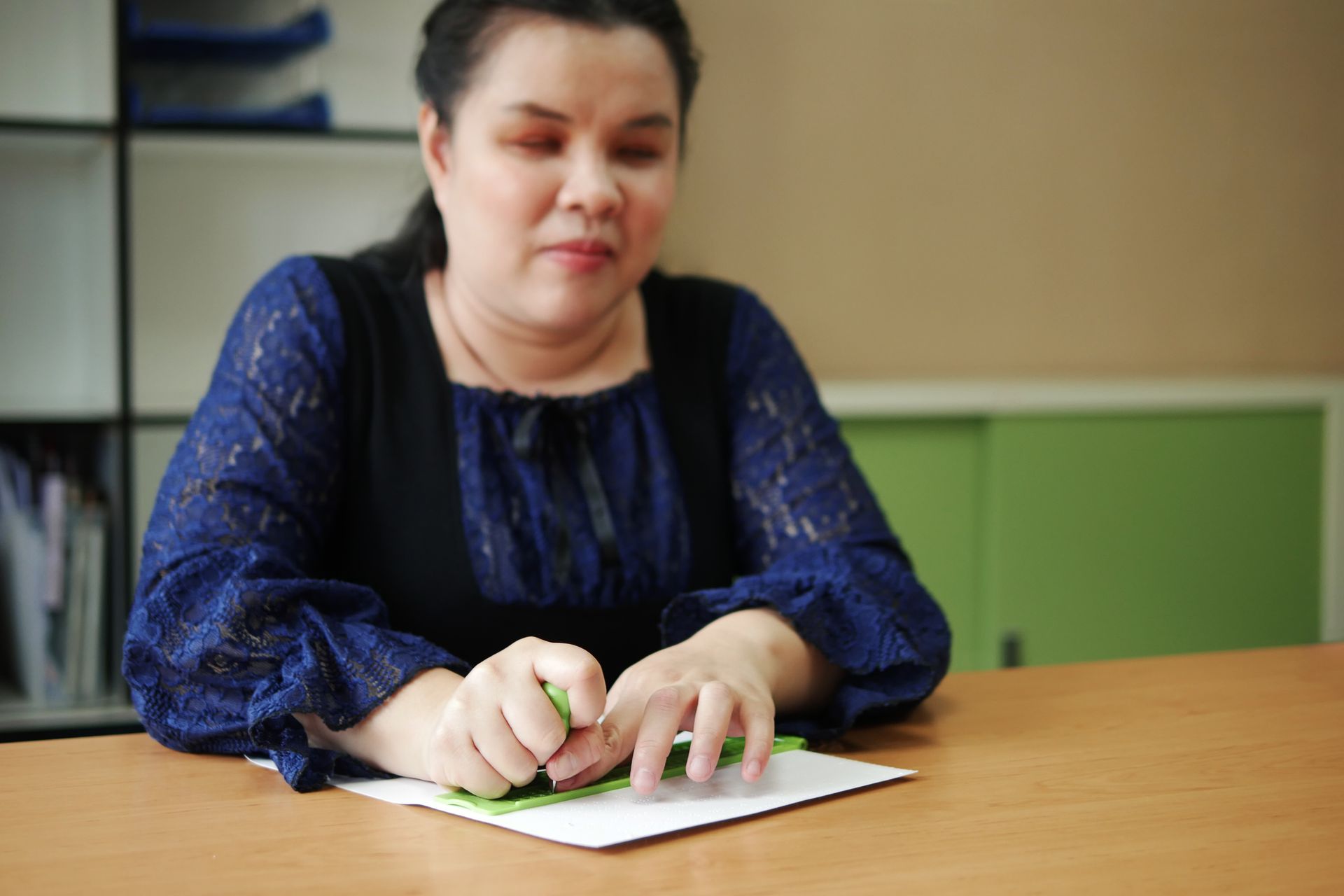The Linguistic Framework of Inclusion: Transforming Language to Cultivate Universal Belonging
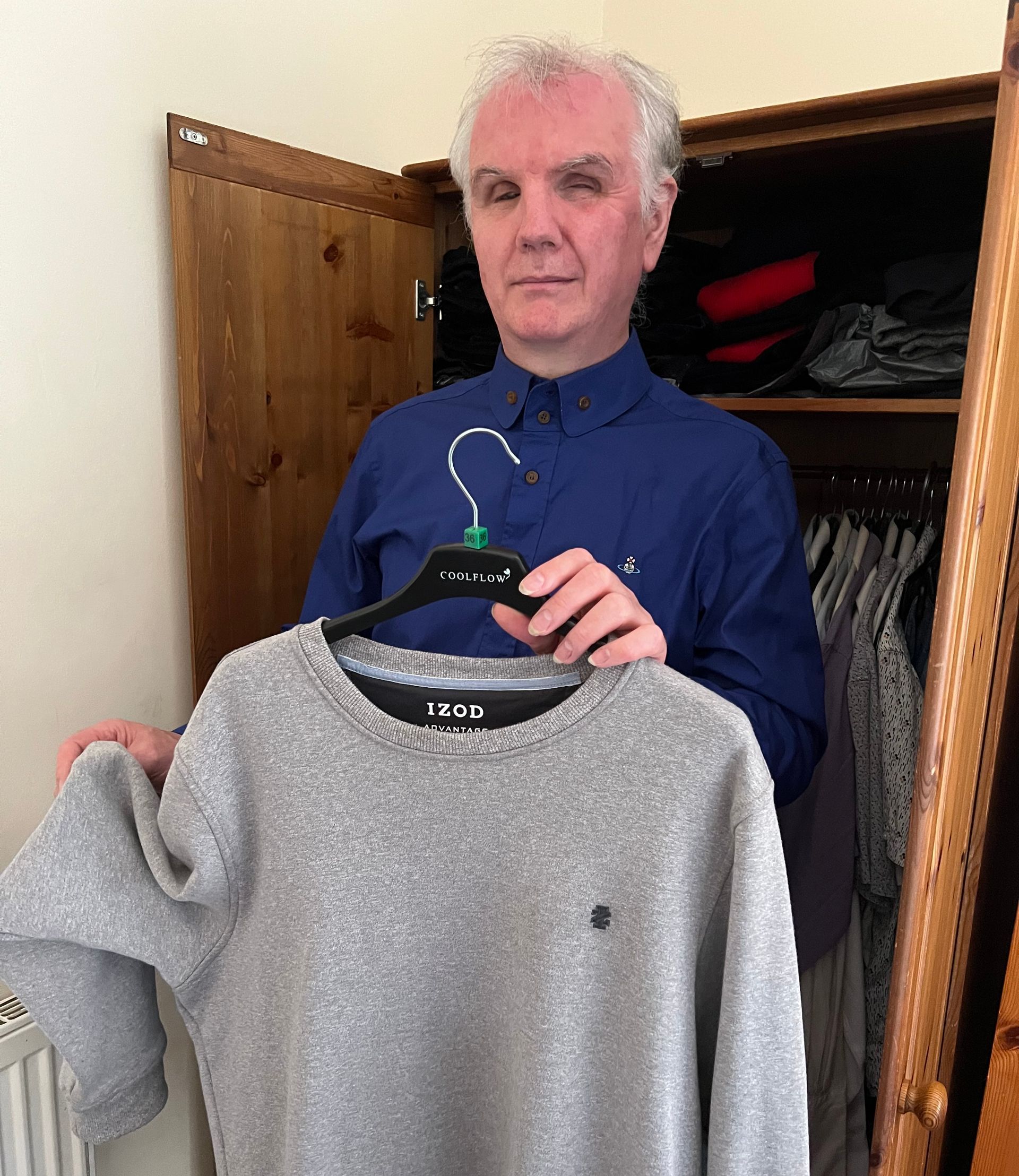
By Philip Francis Anderson, Activist and Podcast Host, Campaigning for Change.
Explore the language of inclusion: how a simple shift in words can create a world where all truly find their place.
Join the Movement to Empower Through Language!
Get ready for an insightful read! This comprehensive article dives into how language can empower and create a world of inclusion. If you're short on time, hit the "Listen to This Article" button to absorb its essence while you savour your coffee.
Introduction
Imagine you're sitting in a bustling café, sipping your favourite brew, when you notice someone rolling in with a wheelchair. A guide dog leads another individual to a nearby table. What's your immediate thought? Is it focused on the individuals themselves, their unique stories, or the assistive devices they use? Or is it drawn to the conspicuous "DIS" in "Disability"?
Welcome to a discourse that delves deep into the intricacies of our language, the very language that shapes our perceptions and attitudes toward individuals with different access needs and requirements. Today, I'm excited to embark on a journey that explores "The Importance of using Person-Centred Language," not just from one, but three distinct angles: the practical, the emotional, and the psychological.
As someone who has been living with sight loss for over 54 years, I know firsthand the impact of words and language in shaping our experiences and opportunities. My ultimate objective is simple yet profound: inclusion. It's my fervent belief that our failure to embrace person-centred language is what perpetuates the marginalisation of those with alternative access needs. It's the reason employers often struggle to see beyond the wheelchair or the guide dog, perceiving these as barriers rather than recognising the capabilities, talents, and aspirations that lie within. But why is this so important? Why should we make a conscious effort to remove the "DIS" from Disability?
In this journey, we will explore the practical aspect – how person-centred language can transcend the limitations of visible disabilities. We will delve into the emotional realm, uncovering the empowering impact of words on self-esteem and identity. And we will take a psychological dive, examining how language shapes our beliefs and, ultimately, our actions.
But this discourse isn't just about theory; it's about action. It's about my
ongoing campaign to take that "DIS" out of Disability, and how you can be a part of this transformative movement. Therefore, are you ready to embark on this journey toward a more inclusive society, where words become bridges instead of barriers? Let's begin.
Definition of Person-Centred Language
Picture a world where words transcend barriers, where labels no longer define a person's worth or potential. This is the essence of person-centred language, a communication approach that goes beyond mere semantics; it's a shift in perspective, a revolution in how we perceive and interact with individuals with different access needs and requirements.
What is Person-Centred Language?
Person-centred language, as outlined by the American Psychiatric Association (APA), is the deliberate, respectful, and inclusive way of communicating that prioritises the individual's humanity over their disability or access needs. It chooses and uses words that recognise individuals, first and foremost, as people. This demonstrates respect for each person's basic humanity, emphasizing their unique traits, strengths, and worth.
The APA further asserts, "The use of compassionate, stigma-free, person-centred words plays a role in helping each person on their road to recovery from SMI (Serious Mental Illness)," and in its ability to support individuals in their pursuit of healing, progress, and goals.

Examples of Person-Centred Language vs. Stigmatising Language
Let's illustrate the difference with some examples:
Stigmatising Language: "She's a wheelchair user."
Person-Centred Language: "She uses a wheelchair for mobility."
In the stigmatising version, the individual is reduced to their wheelchair, while person-centred language acknowledges the wheelchair as a tool used for mobility without defining the person.
Stigmatising Language: "He's an autistic child."
Person-Centred Language: "He's a child with autism."
In this case, person-centred language recognises the child as a person first, acknowledging their unique identity and abilities beyond their diagnosis.
Why Does It Matter?
The significance of person-centred language, as emphasised by the Alzheimer Society, lies in the profound influence of words on our feelings, actions, mood, and self-esteem. Words can affect us as strongly as physical actions, shaping our perceptions and interactions.
Historically, language used to describe various conditions, including dementia, has often been laden with negativity, focusing on losses experienced by individuals. This approach has contributed to the development and persistence of stereotypes and approaches to care that emphasise weakness over strength, illness over wellness, and victims over whole persons.
As the Alzheimer Society reminds us, this negative language not only influences how others view these conditions but also adds to the stigma and discrimination experienced by individuals living with these conditions and their caregivers.
Humanising and Respecting Individuals
By using person-centred language, we not only show respect but also create an environment where individuals with access needs are more likely to be heard, understood, and included. It fosters a sense of belonging and empowerment, paving the way for a more inclusive society.
In the pages that follow, we'll explore how the use of person-centred language transcends the practical, emotional, and psychological dimensions of inclusion, and why removing the "DIS" from Disability is a vital step toward a more equitable and compassionate world.
The Practical Angle - Beyond the Wheelchair and Guide Dog
In this section, we'll delve into the practical aspects of using person-centred language and how it challenges common stereotypes and misconceptions about individuals with alternative access needs and requirements.
Common Stereotypes and Misconceptions
- People with disabilities are brave and courageous.
- All individuals who use wheelchairs are chronically ill or sick.
- Wheelchair use is confining; individuals who use wheelchairs are "wheelchair-bound."
Let's explore these stereotypes and misconceptions in light of the facts.
Using Person-Centred Language to Challenge Stereotypes
The concept of person-centred language, as promoted by the Georgia Council on Developmental Disabilities (GCDD), places emphasis on the person first, shifting the focus from disability to the individual. By adopting this language, we move away from viewing individuals through the lens of their conditions and instead recognise their unique traits, strengths, and worth.
In line with GCDD's guidance, it is essential to report on issues that affect the quality of life of individuals with alternative access needs and requirements, such as accessible transportation, housing, healthcare, employment opportunities, or discrimination, rather than solely focusing on their disabilities.
Real-Life Examples of Hindrances to Practical Inclusion:
Practical inclusion can be hindered when society overly fixates on visible disabilities. Let's consider a few examples:
Attitudinal Barriers
Negative attitudes and misconceptions about people with alternative access needs can lead to social exclusion. By using person-centred language, we challenge these attitudes and focus on providing support and opportunities for all individuals. As a colleague once remarked: “it’s not society that hinders me, but attitude.” And added: “attitudes can be changed.”
Physical Barriers
Physical environments may inadvertently create obstacles for individuals with alternative access needs. For instance, narrow doorways, curbs, or inaccessible toilets can limit mobility. By adopting inclusive design principles, spaces can be made more accessible.
Policy Barriers
Although various laws and regulations require accessibility for individuals with alternative access needs, the lack of awareness or enforcement can create barriers. It is crucial that these policies are known and enforced to ensure equal access to services, housing, and employment.
Communication Barriers
Failure to provide accessible communication options, such as large-print text, Braille materials, or sign language interpreters, can isolate individuals with sensory impairments. It was the very reason why I established Braille Transcription UK Ltd in 1998, to enable the free flow of publicly ink-print material in a tactile format for customers and services users with sight loss and low vision. Remember, person-centred language promotes understanding and inclusion in all forms of communication.
Social Barriers
Social attitudes and systemic inequalities can significantly impact individuals with alternative access needs. The Equality and Human Rights Commission highlights that such individuals often face barriers in accessing transport, healthcare, housing, education, and employment. Person-centred language plays a role in dismantling these structural problems and promoting equality and these real-life examples illustrate the practical challenges that individuals with alternative access needs may encounter when society's focus remains fixated on visible disabilities.
In the following sections, I will explore the emotional and psychological dimensions of the importance of person-centred language in achieving true inclusion.
The Emotional Angle - Empowering Through Language
Language has immense power, not only in shaping our perceptions but also in influencing our emotions and self-esteem. For individuals with alternative access needs and requirements, the impact of labels and stigmatising language can be profoundly emotional and often overlooked.
The Emotional Impact of Labels and Stigmatising Language
Imagine for a moment being defined by a single word or phrase, one that reduces your identity to a medical condition or physical characteristic. It's a stark reality that many individuals with access needs face daily. When society labels and stigmatises them based on their disabilities, it can lead to a range of negative emotional responses, including:
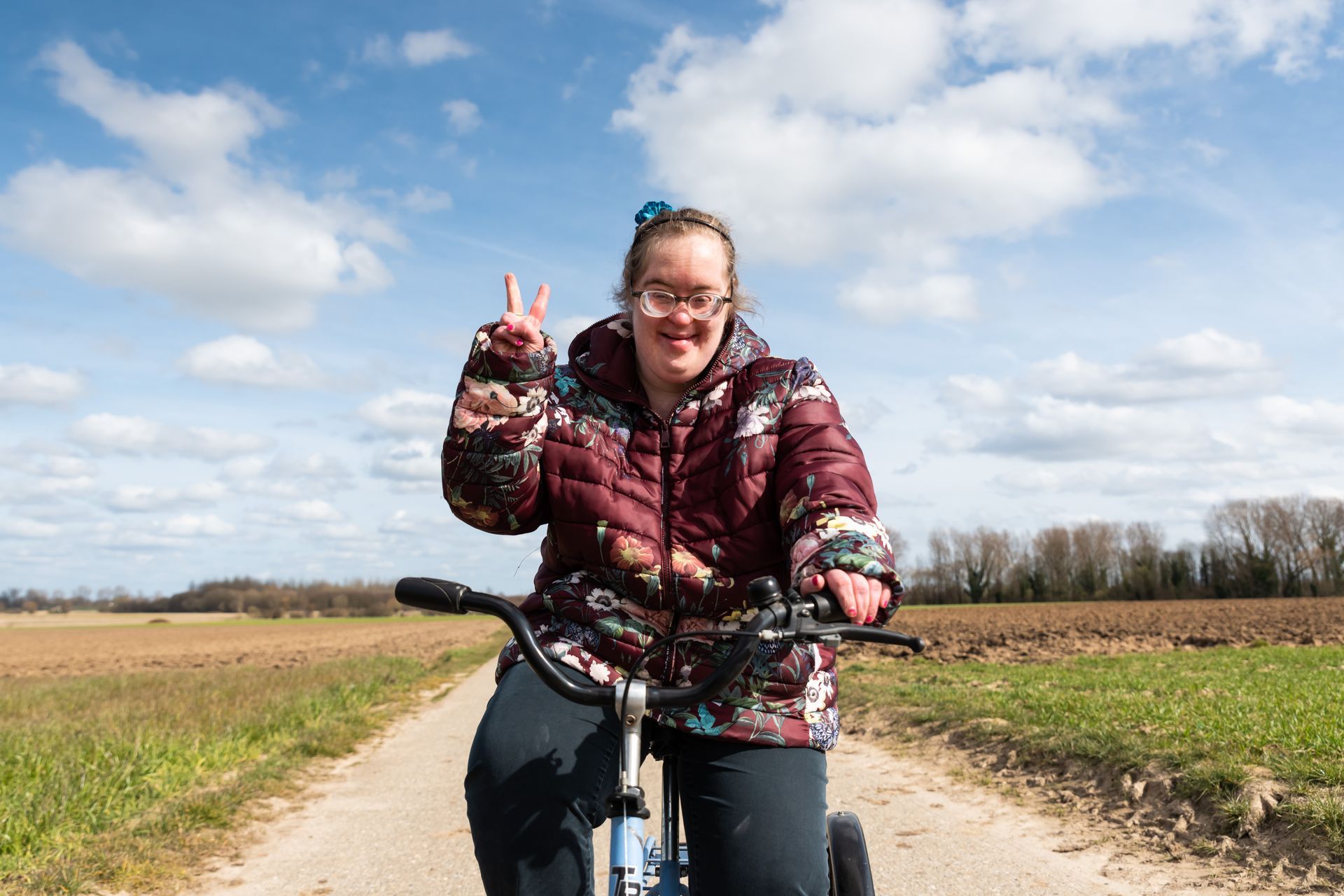
1. Stigma and Shame
Being subjected to derogatory terms or stereotypes can evoke feelings of shame and embarrassment. It's as if society is telling them that their differences make them inferior or unworthy.
2. Isolation and Loneliness
Stigmatising language can create a sense of isolation. When others focus on the disability rather than the person, it can lead to feelings of loneliness and exclusion.
3. Low Self-Esteem
Constant exposure to negative language can erode self-esteem. Individuals may internalise these negative perceptions and begin to doubt their own worth and capabilities.
4. Anxiety and Depression
Living in a world where you feel misunderstood and marginalised can lead to heightened anxiety and even depression. The emotional toll of navigating a society that often fails to recognise your humanity is significant.
5. Loss of Agency
Labels and stigmatising language can strip individuals of their agency and autonomy. They may feel that their opinions and choices are dismissed because of preconceived notions about their abilities.
To explore the emotional impact further, it's essential to listen to the voices of individuals with access needs, as their experiences provide invaluable insight into the power of language in shaping emotions. Furthermore, we will examine how person-centred language can serve as an empowering alternative, fostering a sense of dignity, belonging, and emotional well-being.
In the following sections, we will delve deeper into these emotional dimensions, shedding light on the transformative potential of language in creating a more inclusive and empathetic society.
Personal Stories: The Emotional Toll of Exclusionary Language
To truly understand the emotional impact of exclusionary language and stigmatising labels, let's delve into personal stories that shed light on the very real and often profound toll it takes on individuals with alternative access needs. In this section, we'll explore personal experiences that highlight the power of words to either wound or empower.
1. Feeling Dismissed: A Taxi Ride to Remember
One vivid memory stands out—a taxi ride to Keele University where I was studying creative writing. During the journey, the taxi driver made a casual but hurtful remark: "If I was blind, I know what I would do, let the system keep me and not waste my time bettering myself." His words were stigmatising, implying that a sight loss diagnosis should limit one's aspirations and ambitions.
What made this encounter particularly impactful was his dismissive attitude towards my abilities and willingness to contribute to my future happiness and society. It was a moment that left me perturbed and disappointed, highlighting the prevailing misconceptions that still persist in the 21st century.
2. The Pain of Assumptions: A Cup of Tea Rejected
Another experience took me back to my childhood, where I faced exclusionary language within my own family. At the tender age of 11, I prepared a cup of tea for my father. However, when he discovered that it was me who had made it, he rejected it immediately. His actions brought tears to my eyes, as he dismissed my capabilities solely because of my sight loss.
While I consider myself strong, this incident stirred feelings of anger and frustration. It was a painful reminder of the societal biases that can permeate even our closest relationships. On a positive note, it fuelled my determination to prove these assumptions wrong and reaffirmed my resolve to succeed.
3. Invisibility in Social Settings: Disconnected Conversations
Moments of isolation and misunderstanding have also been a part of my journey, often occurring when I'm in the company of friends or acquaintances with unimpaired vision. It's as though I become invisible within the group dynamic. People tend to talk about me rather than directly engaging with me, asking questions through my companion, such as, "Would Philip like a drink?"
In deeper conversations, I've found myself talking into the void, as though my thoughts and opinions are inconsequential. This type of exclusionary language impacts my sense of belonging and connection, leaving me feeling sidelined and overlooked.
4. The Power of Inclusive Language: An Equal Learning Environment
On a more positive note, my experiences with the Open University have been a beacon of empowerment and respect. Here, I am treated as an equal to my fellow students, and person-centred language prevails. In this environment, my opinions are valued and respected, allowing me to feel fully human and contributing to a significant boost in my self-esteem.
These personal stories illustrate the emotional rollercoaster that individuals with alternative access needs may face due to exclusionary language. They highlight the power of words to either uplift or diminish, to empower or disempower. In the next sections, we will explore the transformational potential of person-centred language in fostering empathy, dignity, and true inclusion.
The Psychological Angle - Shaping Perceptions and Beliefs
Words have a remarkable influence on our emotions, but for individuals with alternative access needs, this impact can be particularly significant. Recent research,
as highlighted in a Psych Central article from March 2022, sheds light on the profound effect of words on our emotional well-being.
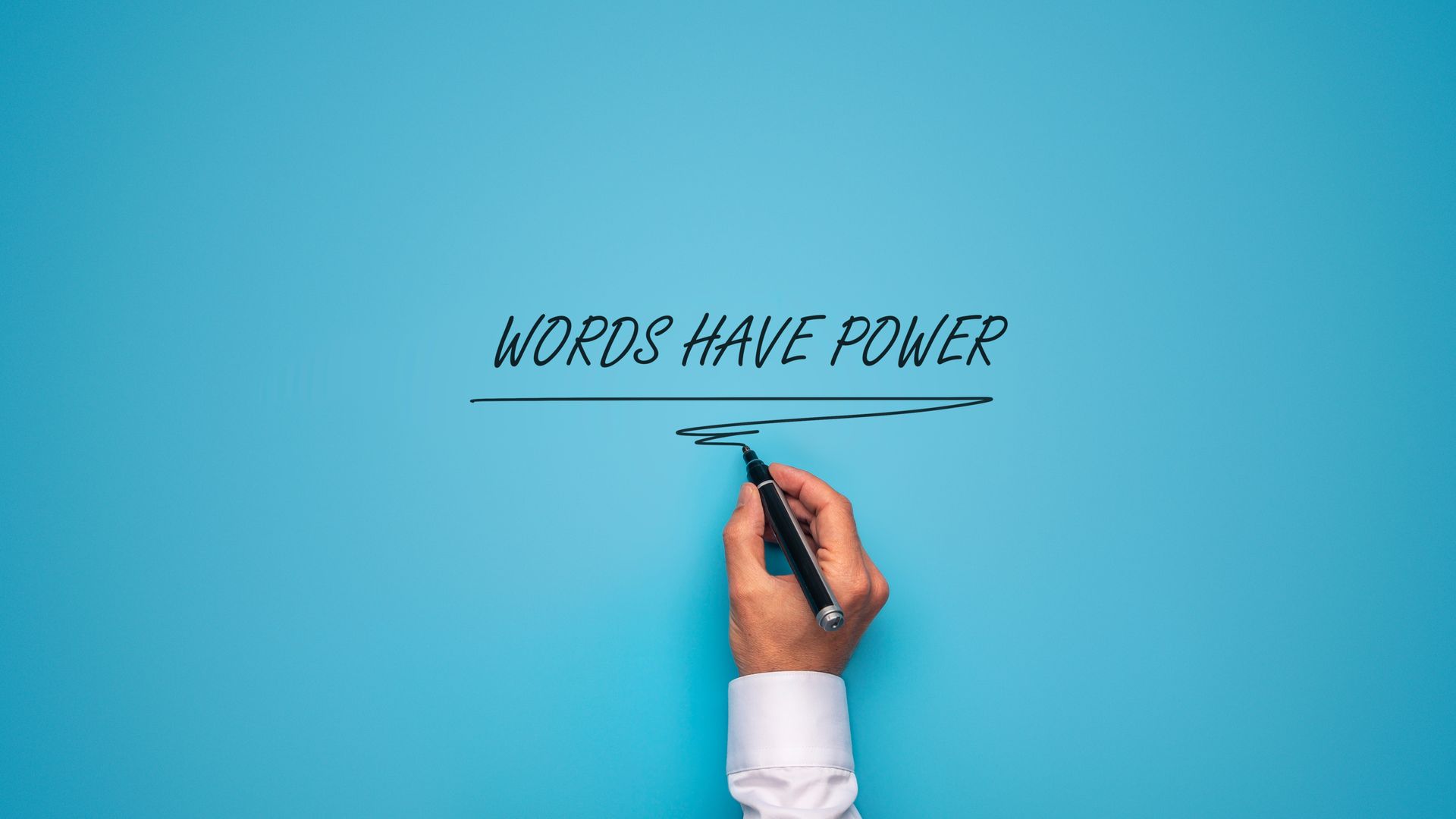
The Emotional Impact of Words on Persons with Alternative Access Needs
Firstly, words can shape how individuals perceive and experience physical pain. Studies involving brain imaging and behavioural data have shown that pain-related and negative words can intensify the experience of pain, activating various areas of the brain. This suggests that the language used can modulate pain perception, a finding with implications for healthcare and pain management in the context of alternative access needs.
Secondly, the context in which words are used plays a crucial role. Words carry with them associations and emotions, and people tend to import these perceptions into new situations. For example, the choice of words like "caused" or "produced" can significantly impact how individuals perceive medical outcomes. This phenomenon is referred to as "semantic prosody" and underscores the importance of precise and considerate language when discussing healthcare and treatment options.
Lastly, the article highlights the power of positive language in improving performance and well-being. Encouraging words and verbal affirmations have been shown to enhance physical performance during exercise and sports activities, particularly for individuals facing fear or injury-related apprehension. This demonstrates that language can be a powerful tool for empowering individuals with alternative access needs to overcome challenges and excel in various endeavours.
In summary, the impact of words on emotions is a crucial consideration in the context of persons with alternative access needs. Language can affect how individuals perceive pain, the outcomes of medical interventions, and their overall well-being. Therefore, it is imperative to choose words thoughtfully, as they can either empower and uplift or cause unintended harm.
Person-Centred Language: A Tool for Reducing Stigmatisation
Person-centred language is a powerful tool in the realm of intellectual disabilities (ID), which the Centres for Disease Control and Prevention (CDC) defines as "a term used when there are limits to a person’s ability to learn at an expected level and function in daily life." This definition encompasses a wide range of challenges from difficulties in communicating their wants and needs, self-care, and a slower pace of learning and development compared to their peers. Our exploration of this topic, guided by
the scoping review conducted by Hannah A. Pelleboer-Gunnink and her team, unveils three crucial aspects:
1. Impact on Stigmatisation Levels
One striking revelation from the research is that stigmatisation is more pronounced when individuals with intellectual disabilities (ID), a condition characterised by significant limitations in intellectual functioning and adaptive behaviour, have higher support needs. Care providers, who are essential in the lives of individuals with ID, may exhibit stigmatising attitudes in these cases. This evidence underscores the importance of person-centred language in mitigating stigmatisation levels. By adopting inclusive and respectful language, care providers can contribute significantly to fostering a supportive and non-stigmatising environment for individuals with ID.
2. Intersectionality of Stigmatisation
While the core stigmatisation is associated with intellectual disabilities, the research hints at another critical aspect: intersectionality. Care providers may stigmatise individuals based on various social identities beyond their intellectual disabilities. This intersectional stigmatisation highlights the need for a holistic approach to person-centred language. Recognising and addressing biases related to multiple dimensions of a person's identity is vital for promoting inclusivity and combating stigmatisation effectively.
3. The Role of Attitudes and Language
The findings emphasise the interconnectedness of attitudes and language. Care providers' attitudes toward individuals with ID are intertwined with the language they use. Person-centred language is not just a linguistic preference; it reflects a broader attitude of respect, dignity, and inclusivity. To challenge stigmatisation effectively, it is imperative to not just encourage the use of person-centred language but also to promote a shift in attitudes. By fostering a culture of respect and understanding, we can create a more supportive and accepting society for individuals with intellectual disabilities.
In conclusion, person-centred language is not merely a matter of semantics; it is a potent tool for reducing stigmatization and promoting inclusivity. The evidence from this scoping review highlights the multifaceted impact of language on attitudes and perceptions, urging us to prioritise respectful and inclusive language in our interactions with individuals with intellectual disabilities (ID).
Language's Influence on Behaviour and Beliefs
Understanding the influence of language on behaviour and beliefs is crucial, especially in the context of stereotype threat. Stereotype threat is a phenomenon where individuals from stigmatised groups underperform on tasks due to the activation of negative stereotypes. According to
Schmader, Johns, and Forbes, this research delves into the intricacies of stereotype threat and its impact on performance. Here, we explore three key aspects of their integrated process model:
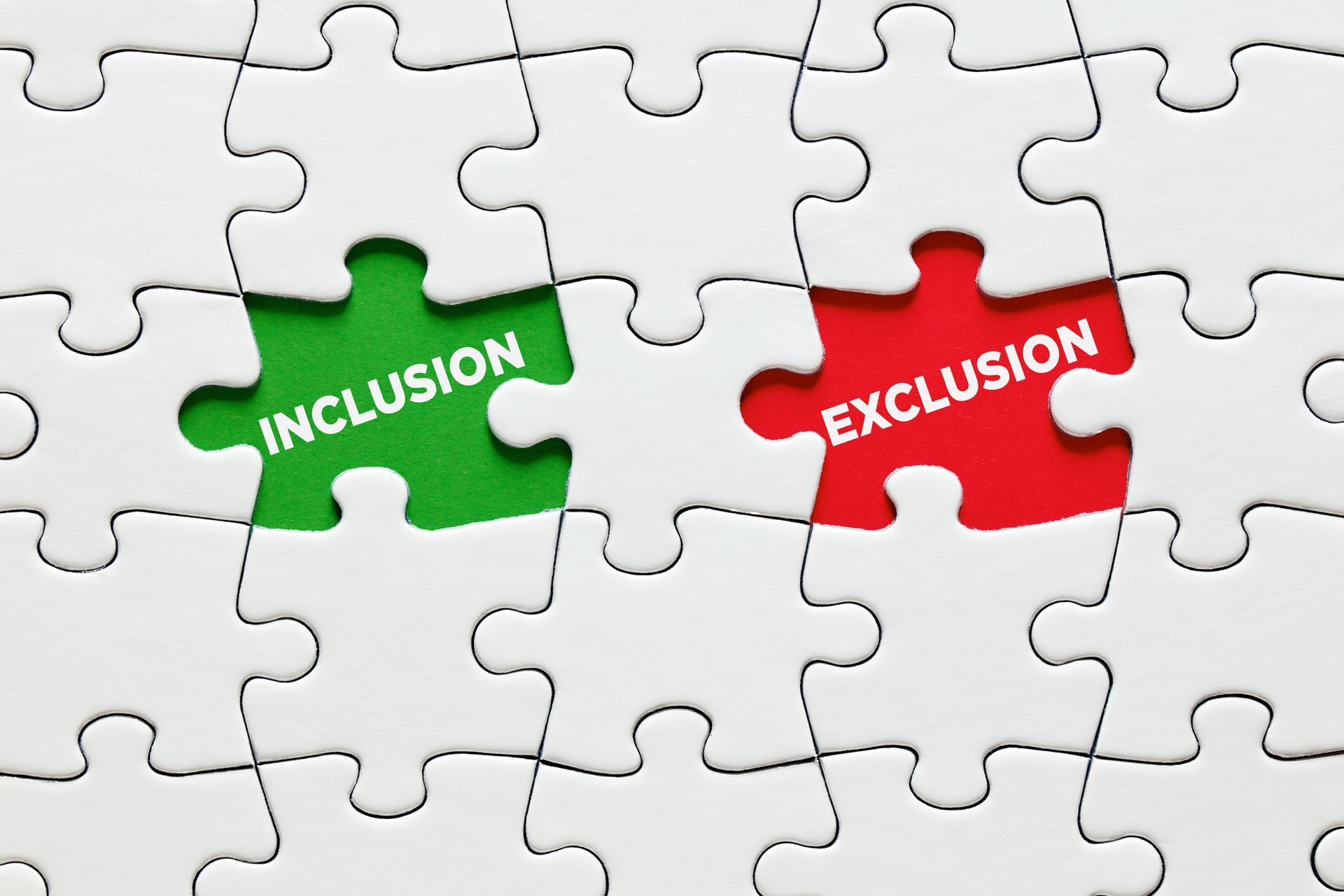
1. Physiological Stress Response
One pivotal mechanism in the integrated process model is the physiological stress response triggered by stereotype threat. Schmader and Johns agree that when individuals face situations where their abilities are stereotypically questioned, their bodies react with stress responses. These responses have significant consequences, impairing prefrontal processing, which is vital for optimal task performance (Schmader et al., 2008). The stress response is not merely a psychological phenomenon; it manifests physically and can hinder cognitive and motor functions (Schmader et al., 2008). This underscores the importance of language in shaping perceptions and beliefs, as the mere mention of stereotypes can evoke physiological stress responses that affect behaviour and performance.
2. Active Monitoring**
Another critical aspect of the integrated model is the active monitoring of performance by individuals under stereotype threat. Schmader, Forbes, and Johns (2008) found that they become hyper-aware of their actions and decisions, constantly evaluating themselves to defy negative stereotypes. This heightened self-monitoring consumes cognitive resources that would otherwise be directed towards task execution. Language plays a pivotal role here, as the way tasks are presented or described can activate stereotype threat (Schmader et al., 2008). Employing person-centred language can mitigate this effect, reducing the need for individuals to engage in excessive self-monitoring and freeing up cognitive resources for optimal performance.
3. Suppression of Negative Thoughts and Emotions
Efforts to suppress negative thoughts and emotions represent the third mechanism through which stereotype threat disrupts performance. Schmader, Johns, and Forbes (2008) explain that individuals attempt to self-regulate by suppressing negative reactions to stereotypes. However, this self-regulation process is mentally taxing and depletes executive resources necessary for cognitive and social tasks. Language is the conduit through which stereotypes are conveyed, making it a potent tool in influencing this aspect of behaviour (Schmader et al., 2008). Choosing person-centred language that avoids perpetuating stereotypes can alleviate the need for individuals to constantly suppress negative thoughts and emotions, thereby enhancing their cognitive performance and overall well-being.
In summary,
the integrated process model proposed by Schmader, Johns, and Forbes (2008) sheds light on how stereotype threat operates through physiological stress responses, active monitoring, and the suppression of negative thoughts and emotions. Recognising the role of language in activating stereotype threat highlights the significance of adopting person-centred language to counter its detrimental effects and foster a more inclusive and equitable environment.
The Role of Language in Shaping Attitudes Towards Disability
In our exploration of person-centred language and its profound impact on perceptions and beliefs, it's crucial to delve into how language influences our understanding of disability. Two prominent models,
the social model of disability and the human rights model of disability, play pivotal roles in shaping the discourse around disability. Rather than viewing them as opposing forces, we propose a complementarity thesis, suggesting that these models work harmoniously, each contributing its unique perspective to advance the rights and inclusion of individuals with disabilities.
Distinguishing Between Impairment and Disability
The “Social Model of Disability”,
as proposed by scholars like Michael Oliver, views disability as a socially constructed form of oppression. Oliver, in his work, emphasised that disability is not an inherent trait of an individual but a result of the social environment's failure to accommodate diverse needs. According to Oliver, "The social model of disability is about removing barriers that restrict life choices for people with disabilities. When barriers are removed, individuals with disabilities can be independent and equal in society, with choice and control over their own lives." This core distinction lies in differentiating between impairment, which refers to individual traits or conditions, and disability, which denotes the social exclusion and disadvantages arising from environmental and attitudinal barriers.
The Human Rights Model's Emphasis on Dignity and Responsibility
The “Human Rights Model of Disability” aligns closely with the social model's principles and places a strong emphasis on the inherent dignity of all individuals. It shifts the responsibility onto society for creating these barriers,
echoing the sentiments of scholars like Anna Lawson and Angharad E. Beckett. They argue that the human rights model asserts that every person, regardless of their physical or cognitive characteristics, possesses inalienable rights. It's a model that calls for the removal of discriminatory practices, ensuring equal opportunities, and fostering an inclusive society. In the words of Lawson and Beckett, "Both the social and human rights models are vital in promoting a comprehensive understanding of disability that emphasises the rights and dignity of individuals."
Complementarity in Action: The UN Convention on the Rights of Persons with Disabilities (CRPD)
A tangible example of the complementarity thesis in action is the creation and monitoring of the UN Convention on the Rights of Persons with Disabilities (CRPD). The social model significantly influenced the CRPD's preamble, which underscores the critical interaction between individuals with impairments and the environmental barriers they face. The debate surrounding the inclusion of a formal definition of "disability" in the CRPD exemplifies the social model's principles guiding these discussions. Eventually, the CRPD adopted a definition in alignment with the social model's perspective, clearly distinguishing between impairment and disability.
In conclusion, these models, despite their differences, are not opposing but complementary. They work together to promote the rights and inclusion of individuals with disabilities. By recognising that language shapes attitudes, we appreciate the power of person-centred language in framing disability positively, emphasizing the value of every individual, and driving societal change toward greater inclusivity and respect.
Abolish the "DIS" from "Disability!" – A Step Towards Person-Centred Language
In the grand tapestry of person-centred language, the "Taking Out The DIS" from Disability campaign, based on personal experience and launched by me, stands as a vibrant thread of change and empowerment. With over 100 signatures gathered within its first two weeks, this grassroots movement exemplifies the collective will to challenge disempowering language and create a more inclusive society. It echoes the broader call for embracing true equality by shifting our focus from disability to capability. This campaign, as part of the larger narrative, signifies that words hold the power to shape our perceptions and beliefs, and I have embarked on this journey to end a lifetime of stigma and debilitating definitions. It's time to recognise the strengths, talents, and potential within each individual, irrespective of their unique challenges.
It's important to note that, as someone who has been living with sight loss for over 54 years, I have personally experienced the impact of stigmatising language and the barriers it can create. My journey has inspired me to launch this campaign, not as an attempt to diminish or undermine sensory conditions and individual diagnoses, but as a significant culture shift aimed at ending discrimination and conflict. By removing the 'DIS' from 'Disability,' we seek to build bridges, foster understanding, and pave the way for a more inclusive society where everyone, regardless of their unique challenges, is acknowledged and valued for their abilities.
Bridging the Social Divide – Person-Centred Language in Action
Within the narrative of person-centred language, the "Taking Out The DIS" from Disability campaign goes beyond linguistic transformation. It also strives to bridge the gap in the fight for social equality. By removing the "DIS" from "Disability," the campaign exemplifies the essence of person-centred language – understanding and acceptance. This aligns with historical movements that have successfully eliminated derogatory terms, setting the stage for a more respectful and inclusive future. By signing the petition and spreading the word, individuals become agents of change, encouraging others to see beyond disabilities and support the rights and dignity of every person.
Be Part of a Movement that Redefines Perceptions for All
As we conclude this journey through the realms of person-centred language, the
"Taking Out The DIS" from Disability campaign invites individuals to be part of a movement that redefines perceptions and beliefs. This movement aligns with the broader theme of my blog – recognising that words shape our understanding and interactions. Every signature counts, and sharing the message with friends, family, and colleagues can amplify its impact. Together, this movement seeks to make a lasting impression by promoting a society that embraces true equality and celebrates the abilities of all its members.
Join the campaign, sign the petition, and contribute to the ongoing journey toward a more inclusive and empowering world for everyone.
Summary
Throughout our exploration of the practical, emotional, and psychological angles, I've unveiled the transformative power of words.
In the practical realm, I've confronted stereotypes and misconceptions, emphasising how person-centred language challenges these preconceived notions. Real-life examples have illustrated the barriers created by focusing solely on visible disabilities.
Turning to the emotional aspect, I've delved into the toll of labels and stigmatising language, underscoring the empowering effects of person-centred communication on self-esteem and empowerment. Personal anecdotes have driven home the emotional impact of exclusionary language.
On the psychological front, I've explored how language shapes our perceptions and attitudes, influencing societal views on disability. Supported by research, I've established the connection between language, behaviour, and beliefs, reinforcing the need for person-centred language.
Furthermore, I've highlighted an ongoing campaign that seeks to remove the "DIS" from Disability, initiated based on personal experience. The campaign aligns seamlessly with the principles of person-centred language, emphasising the importance of recognising individuals' abilities ahead of their conditions. I encourage readers to join this initiative, stressing that collective action is key to creating a more inclusive society.
In conclusion, as we reflect on these key points, I leave you with a powerful call to action. It's an invitation to adopt person-centred language in your interactions, spread awareness, and actively support the campaign. The ultimate goal is to break down barriers, challenge stereotypes, and celebrate the abilities of every individual, regardless of their unique challenges. Together, we can pave the way for a more inclusive and equitable future.
Conclusion
Throughout this exploration of person-centred language and the campaign to remove the "DIS" from Disability, we've journeyed through various angles - the practical, the emotional, and the psychological. We've delved into the societal misconceptions surrounding individuals with access needs, witnessing the power of person-centred language in challenging these stereotypes. We've felt the emotional resonance of exclusionary labels, countered by the uplifting impact of language that acknowledges ability before disability. We've delved into the psychological realm, understanding how language influences perceptions, behaviours, and beliefs, and examined studies that validate these insights.
In this quest for inclusion, the Social Model of Disability emerges as a guiding light. It reminds us that disability is not an inherent flaw but a product of a society that erects barriers and promotes exclusion. By distinguishing between impairment and disability, this model places the onus on society to dismantle these barriers and create an inclusive environment where individuals with access needs can thrive.
Our campaign to remove the "DIS" from Disability is a call to action rooted in the principles of person-centred language and the Social Model of Disability. It's a movement inspired by personal experiences, driven by a vision of an inclusive society that values and celebrates every individual's abilities and potential. As we've seen, every signature on our petition counts, every voice adds to the chorus, and every step taken together brings us closer to our goal.
So, let's embrace this transformative journey. Let's challenge the stereotypes, dismantle the barriers, and foster understanding and acceptance. Let's replace "DIS" with "ability" and recognise the strength, talent, and potential within each individual, regardless of their unique challenges. Together, we can make a lasting impact and pave the way for a future where person-centred language is not just a choice but a cornerstone of a more inclusive society.
Join us in this campaign. Sign the petition, share the message, and be part of a movement that redefines how we perceive disabilities. Because, in the end, it's not about taking the "DIS" out of Disability; it's about taking the "DIS" out of Discrimination and embracing a world where inclusion knows no bounds.
Thank you for being a part of this journey, and together, let's continue to make history, inspire change, and build a more inclusive future.
More About Philip Francis-Anderson
For those intrigued to learn a bit more about me beyond the scope of this blog: I'm currently enrolled in the Open University, pursuing a BA in Philosophy and Psychological Studies (Q43). This academic journey allows me to delve even deeper into the intricacies of the human mind and the philosophical underpinnings of our perceptions. I'm enthusiastic about the insights it offers, and I'm sure many of these learnings will find their way into future posts. Watch this space!

Comments Welcome!
To leave a general comment, feedback about a post, or even recommendations for a topic to cover, please just fill out this form. For those who would prefer to send their comment in using audio, there is the additional option to upload an audio file.
Contact Us
In line with GDPR, only complete this form if you are happy for me to use your answers for the purposes of processing of your request and in all
corresponding communications thereafter. Read my Privacy Policy for more information on how I manage your personal data. This contact form is also protected by reCAPTCHA, a Google system. Google's Privacy Policy and Terms of Service apply and are available to read when using the reCAPTCHA tool.
